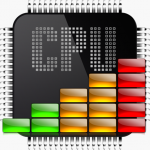Nvidia announced today that it was voluntarily recalling many of its Shield tablets due to a problem with the lithium-ion batteries. The recall covers all tablets sold between July 2014 and July 2015, and the company has stated it will replace current devices with a new tablet, free of charge. Not all Shield tablets are affected by the recall, however, so you’ll want to check your Shield version before boxing it up to ship back to Nvidia.
Nvidia has set up a website for those affected by the issue and states that it is working with government agencies to ensure that the recall is conducted according to standard industry practices. To find out what version of the Shield you have, you’ll want to first update to the latest software version. The latest software build date should read July 1, 2015 (accessed by selecting the Settings icon, followed by “About Tablet” and “System Updates.”
Once you’ve updated, check your Shield battery variant selecting Settings, About tablet, and Status. This will open a screen like the one pictured to the right, and your battery will read as one of two types — either B01 or Y01. Tapping Y01 will launch the recall application on the device, and walk you through the process of setting up a claim ticket. You finish filling out the claim form by using the same link posted above.
The recall doesn’t affect any other Nvidia devices or products. Lithium-ion battery chemistry is tricky and this is far from the first time we’ve seen a company recall a device over a risk of fire or thermal runaway that damages the hardware even if the device itself doesn’t get hot enough to overheat. Nvidia hasn’t quantified how large the recall is or how much of a financial hit it expects to take as a result of replacing these devices; it’ll likely file a notice if the amount is significant or disclose it during its next quarterly earnings call if the cost of the recall doesn’t materially impact quarterly performance.
The Consumer Product Safety Commission reports that the recall affects 88,000 devices (83,000 in the US, 5,000 in Canada.) Since we know that at least two battery models were deployed in the Shield Tablet, this implies that the company has sold more than 88,000 devices, though Nvidia has never broken out the platform’s sales performance.
If you own a Shield tablet we strongly recommend taking Nvidia’s advice and replacing it. Thermal runaway situations are nothing to joke about, and a tablet that’s packed away in a suitcase or backpack when the battery fails could cause significant damage in a short period of time. The Shield is currently one of the better Android tablets on the market, with strong overall performance, particularly if you’re into Android gaming. The quad-core Cortex-A15 and Kepler-based GPU are still quite potent in a tablet form factor, and there’s not yet any sign that Nvidia will bring its Tegra X1 platform to mobile hardware. Team Green may be waiting for 14nm and its power improvements before taking on that challenge.
Torrent Invites! Buy, Trade, Sell Or Find Free Invites, For EVERY Private Tracker! HDBits.org, BTN, PTP, MTV, Empornium, Orpheus, Bibliotik, RED, IPT, TL, PHD etc!
Results 1 to 1 of 1
-
08-02-2015 #1Donor





















- Reputation Points
- 27750
- Reputation Power
- 100
- Join Date
- Aug 2012
- Posts
- 489
- Time Online
- 29 d 23 h 45 m
- Avg. Time Online
- 10 m
- Mentioned
- 79 Post(s)
- Quoted
- 19 Post(s)
- Liked
- 318 times
- Feedbacks
- 34 (100%)
Nvidia voluntarily recalls Shield tablets because of fire risk


 LinkBack URL
LinkBack URL About LinkBacks
About LinkBacks





 Reply With Quote
Reply With Quote





